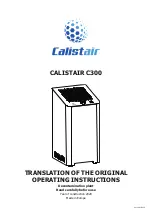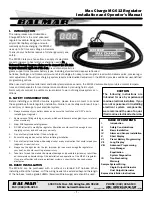
>@9
Multitone Audio Test System
User Manual
V 3.32
59 / 71
Example
:
→
:
→
MEAS:PHASE:SCALE -180
Meas:Phas:Scal 0
(-180 to +180 deg.)
(0 to +2
π
rad.)
MEASurement[1-2]:PHASe?
Use
Returns the measured phase-difference between the 2 channels of the last received multitone
signal. The phase value can be calculated only if both channels have recognized a trigger and
if at least one signal bin is identical, i.e. set on both channels.
ATTENTION: In order to get accurate phase values, it is important to set the input
ranges of both channels to the same level.
Answer
{SigBin_1}
{Phase_1}
{SigBin_n}
{Phase_n}
integer
float + string
integer
float + string
Range
{SigBin_n}
{Phase_n}
Bin_Min to Bin_Max (see Equation 4 and Equation 5)
float ¦ NaN + string
Unit
(as defined by command MEASurement:PHASe:UNIT
)
Example
:
→
→
:
MEAS1:PHASE?
3/1.24E0 deg,23/9.27E-1 deg
Explanation
The returned result is composed of pairs, each starting with the signal bin number, followed
by a "/", the phase result, a white space the unit, in which the phase was measured, and a ",".
MEASurement1:DTMF:STARt
Usage
Resets the DTMF tone receiver buffer (32 keys wide) of channel 1.
NOTE: This command requires installation of the DTMF option for RT-1M.
Examples
:
→
Meas1:Dtmf:Start
Explanation
After this command, RT-1M continues to store all incoming DTMF tones in its buffer.
MEASurement1:DTMF?
Usage
Queries the DTMF tone receiver buffer (32 keys wide) of channel 1.
NOTE: This command requires installation of the DTMF option for RT-1M.
Examples
:
→
→
:
MEAS1:DTMF?
1/2,2/3,2/2
(3 keys detected: 2,8,5)
Explanation
RT-1M returns pairs of x-/y-coordinates, identifying the DTMF keys in the received order.
The standard 4x4 keypad coding is:
↓
y-coord.
1 2 3 4
→
x-coord.
(unused fields may be user-defined)
1
1 2 3 A
2
4 5 6 B
3
7 8 9 C
4
* 0
#
D













































